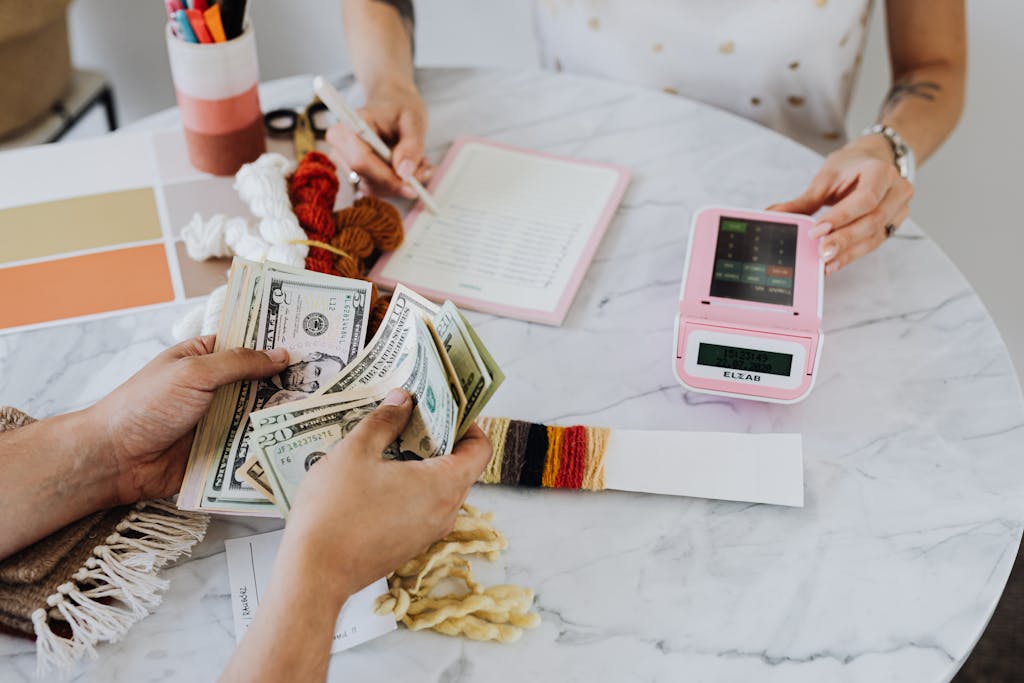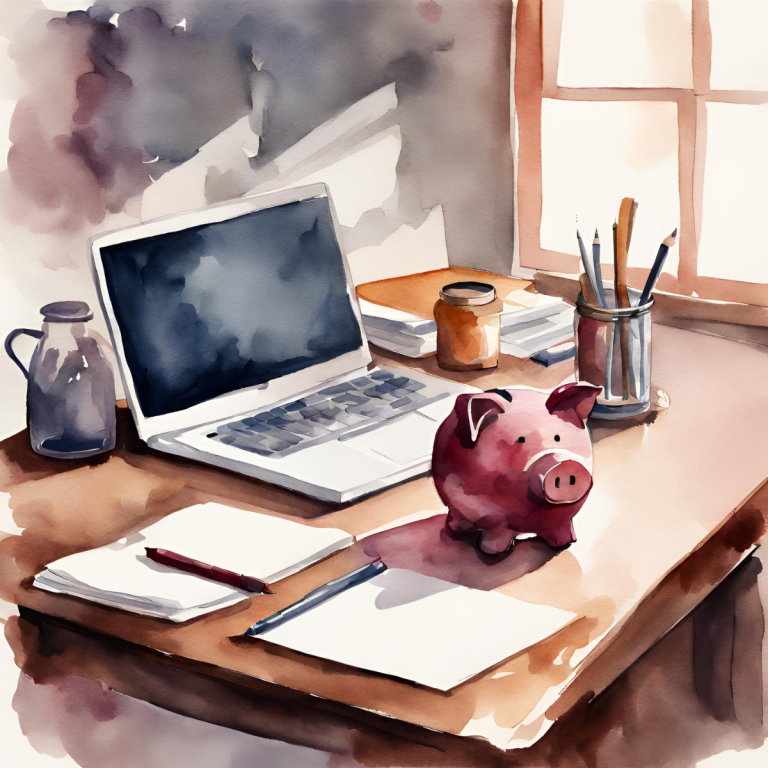How to Create a Sustainable Personal Budget: Tips and Tricks
Creating a sustainable personal budget is crucial for handling your personal finances and making sure you’ve got enough cash to cover your expenses and stash some away for the future.
A sustainable budget strikes a balance between your needs, wants, and financial goals.
Your personal budget as the ultimate GPS guiding you to your financial destination.
It’s going to prevent you from making those spontaneous, impulse buys and keep you financially disciplined.

Baby Steps to Attainable Budgeting: It’s Easier Than You Think
- Keep Track of Your Income and Expenses: Knowing where your money comes from and where it goes is the first step towards financial enlightenment. I know, it’s a no brainer, right?
- Categorise Your Spending: Slice and dice your expenses into categories – from groceries to gym memberships. This will help you identify your spending patterns, and more importantly, areas where you can cut back.
- Set Realistic Financial Goals: Want to buy a house in Hawaii or save enough for a world tour? Start by setting achievable financial goals. It is motivation 101 and will give you something to strive towards.
- Stick to the Plan: It’s easy to create a budget, but it’s a whole new ball game to stay committed. If you don’t stick to your budget and keep checking in on it, you’ll end up in the same place you started – and that’s not where you want to be, trust me.
How to Create a Sustainable Personal Budget

So, when it comes to setting up a personal budget that sticks, it’s all about checking out your spending habits first.
Find those spots where you can switch things up.
Maybe cut back on those extra expenses like dining out or grabbing new outfits.
If you’re looking to increase your income, think about side gigs or chatting with your boss about a raise.
Establishing Your Financial Foundation

When it comes to creating a sustainable personal budget, establishing a solid financial foundation is crucial.
This involves assessing your income and expenses, setting financial goals, and creating a realistic budget that will help you achieve those goals.
Assessing Your Income and Expenses
So, let’s talk about setting up your financial game plan.
First off, you have to check out what’s coming in and going out – your income and expenses.
Get cozy with a spreadsheet or a budget app to keep tabs on everything.
Once you’ve got the lowdown on your money flow, it’s time to pinpoint where you can tighten the belt and maybe boost that income.
It’s all about crafting a budget that’s doable and sticks around for the long haul.
Setting Financial Goals
The next step in establishing your financial foundation is to set financial goals.
This involves identifying what you want to achieve with your money and setting specific, measurable goals to help you get there.
Your financial goals may include things like paying off debt, saving for a down payment on a home, or building an emergency fund. Whatever your goals may be, it’s important to make them specific and measurable so that you can track your progress over time.
Creating a Realistic Budget
Once you have assessed your income and expenses and set your financial goals, the final step in establishing your financial foundation is to create a realistic budget. Your budget should be based on your income and expenses and should allow you to achieve your financial goals over time.
When creating your budget, make sure to be realistic about your expenses and to include a category for savings and emergency funds. This will help you build financial stability over time and prepare for unexpected expenses.
Managing and Monitoring Your Budget

Once you have created a sustainable budget, it is important to manage and monitor it regularly to ensure that you are staying on track with your financial goals. Here are some tips to help you manage and monitor your budget effectively.
Tracking Spending and Adjustments
Tracking your spending is an important part of managing your budget. You can use spreadsheets, budgeting apps like Mint, or other tools to track your expenses and income.
This will help you identify areas where you may be overspending and make adjustments to your budget as needed.
Dealing with Unexpected Expenses
Unexpected expenses can throw off your budget if you are not prepared. It is important to have an emergency fund set aside to cover unexpected expenses like car repairs or medical bills.
If you do not have an emergency fund, consider setting aside a portion of your income each month until you have built up a sufficient fund. Additionally, you may want to consider working with a financial advisor to help you plan for unexpected expenses and ensure that your budget is sustainable in the long-term.
Utilizing Budgeting Tools and Resources
There are many budgeting tools and resources available to help you manage and monitor your budget. These can include budgeting apps, financial planning software, and online resources.
By utilizing these tools and resources, you can stay on top of your budget and make informed decisions about your finances. Whether you prefer to use spreadsheets or apps, there are many options available to help you manage your budget effectively.
Maintaining Financial Health and Growth

Creating a sustainable personal budget is only half the battle. Maintaining your financial health and growth requires continuous effort and adaptation. Here are some key strategies to keep in mind:
Building a Robust Emergency Fund
Life is a wild ride, right?
Unexpected expenses can totally mess up even the best-laid budgets. So, having a solid emergency fund is key to tackle those surprises.
Its advised that you put away three to six months’ worth of living expenses in an emergency fund.
To get that fund going, start by setting a real savings target.
Make it easy by setting up automatic transfers from your checking to your emergency fund.
Think about grabbing a high-interest savings account to score more moolah on that emergency stash.
Planning for Major Purchases
Whether you’re saving for a down payment on a house or planning a big vacation, major purchases require careful planning and budgeting.
Start by setting a realistic savings goal and timeline. Break down your savings goal into manageable monthly or weekly contributions.
Consider opening a separate savings account for your major purchase to keep your funds separate from your day-to-day expenses. You can also use budgeting tools and apps to track your progress and stay on track.
Continuous Learning and Adaptation
Your financial situation is always changing. It’s essential to keep learning and adapting to stay on top of your finances.
Staying in the loop on tax laws, investment tips, and personal finance basics is key.
Maybe try out some courses or workshops to up your financial know-how. And don’t forget, chatting with a financial advisor can help with those tricky money choices.
By increasing your emergency fund, planning for big buys, and always learning and adjusting, you’ll keep your finances in good shape for the long haul. Oh, and stick to your budget and realistic goals to reach financial success!
Tools That Can Help You Budget
We’re living in the digital age! Manual budgeting sounds like a lot of work, right? Well, cue in budgeting tools that are total game changers. They automate the process, making budgeting so much more manageable and error-free. Here are a few of my personal favourites:
- Mint: From creating budgets to tracking bills, Mint does it all. This app is your personal finance advisor in your pocket.
- PocketGuard: This budgeting tool takes into account all your earnings, spends, and savings to give you an idea of how much you can spend on a daily basis. It’s super helpful for impulse buyers.
- You Need a Budget (YNAB): In case you didn’t get it from the name, you need a budget! YNAB is a great tool to help you get there. It assigns every dollar a job, teaching you to live within your means.
Conclusion
At the end of the day, building a personal budget may not be easy, but it is a totally attainable goal that will help you live a more financially stable and stress-free life.
Ready for creating a sustainable budget of your own?
Implement these tips and tricks, utilise the tools, share your experiences
l’ll like to hear about how you budget. What’s worked for you? What’s been the biggest challenge? Let’s chat about it in the comments below.







